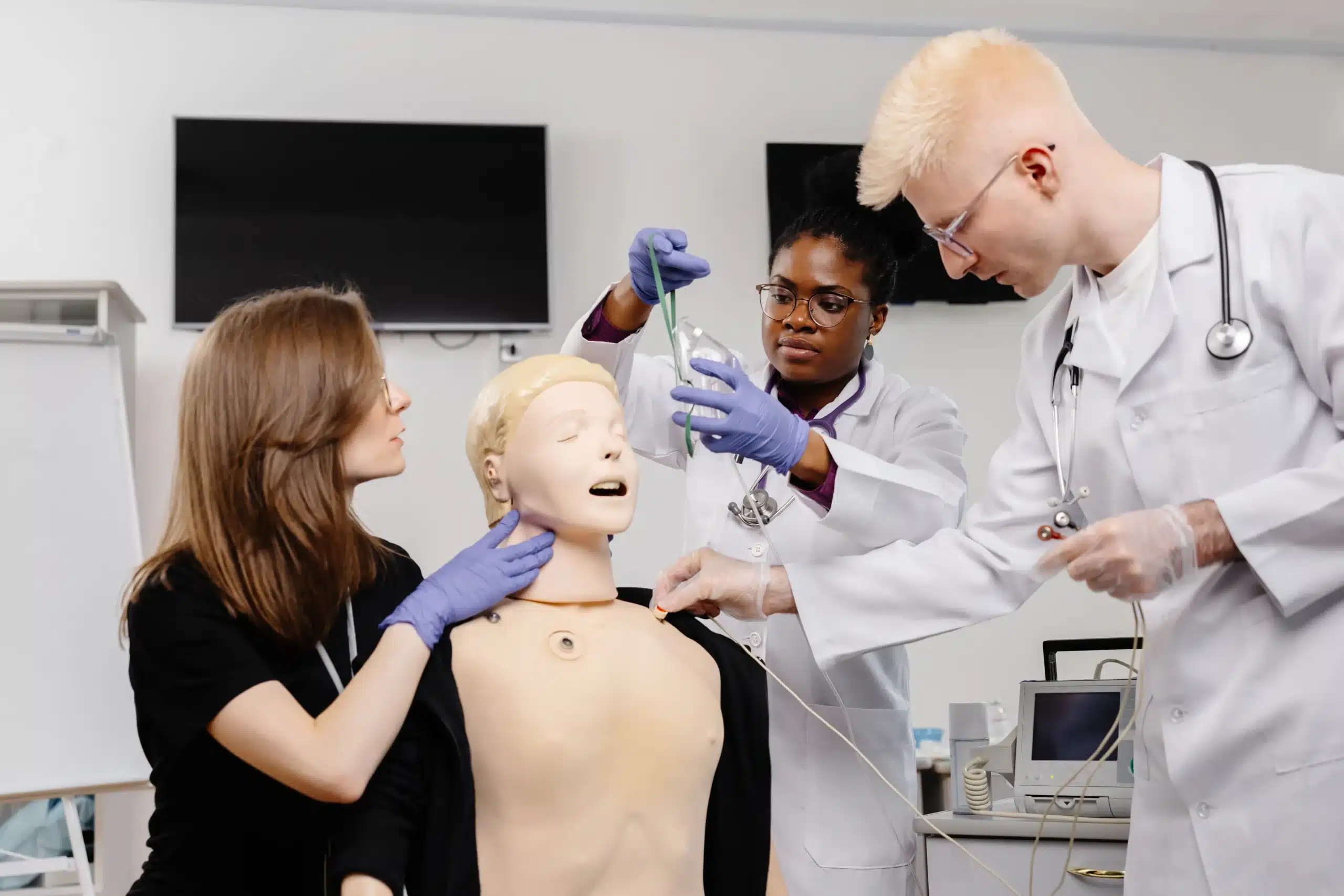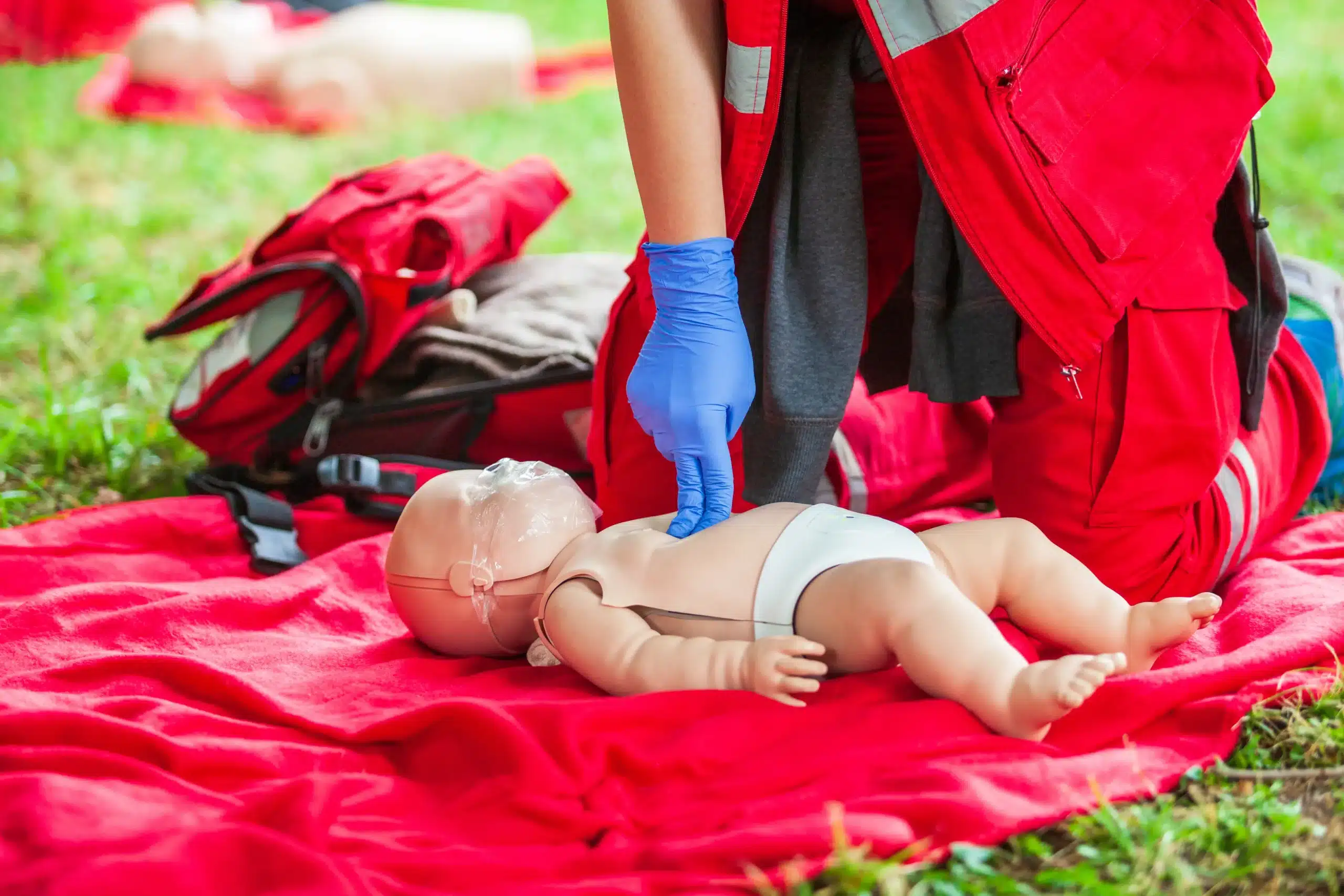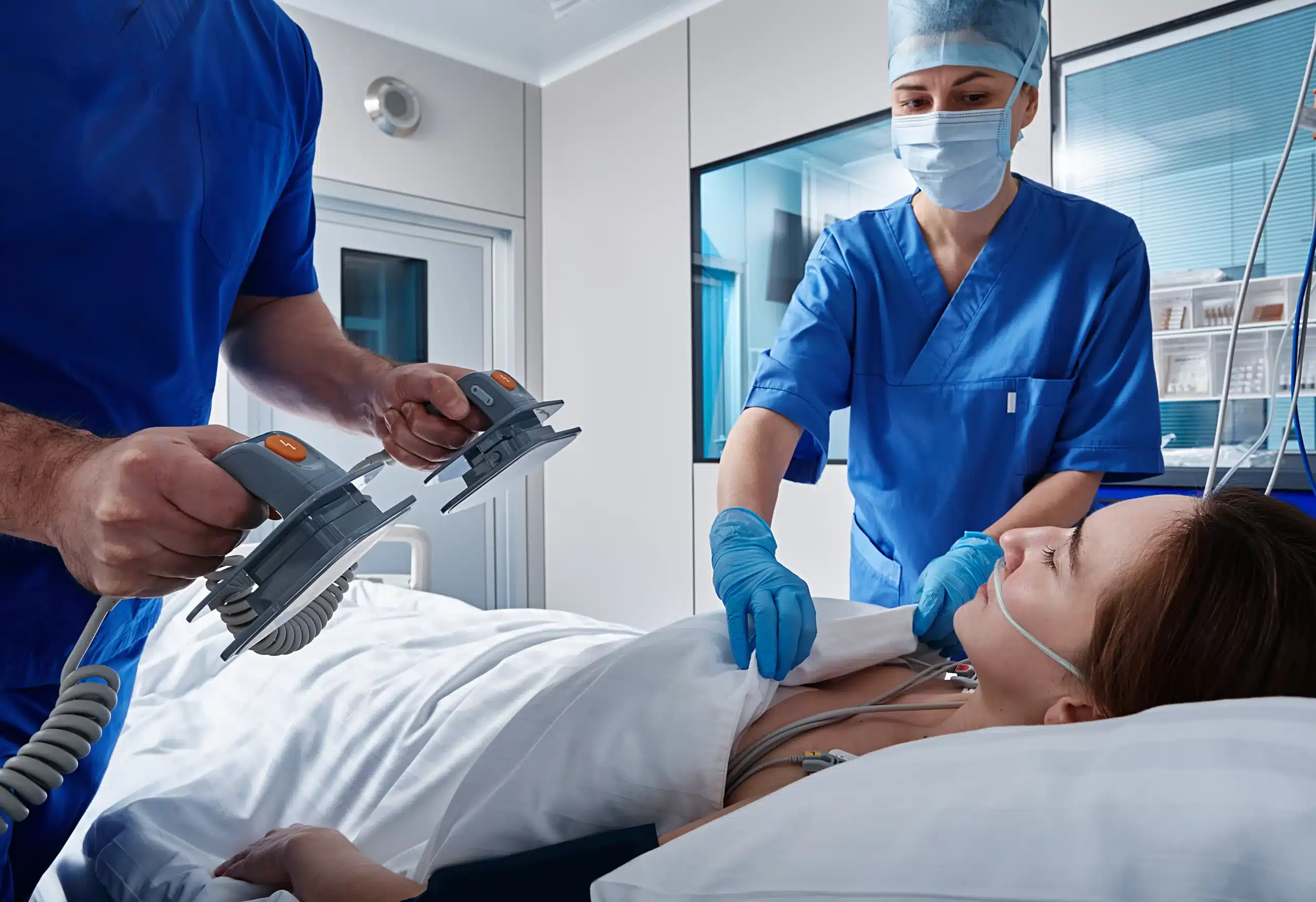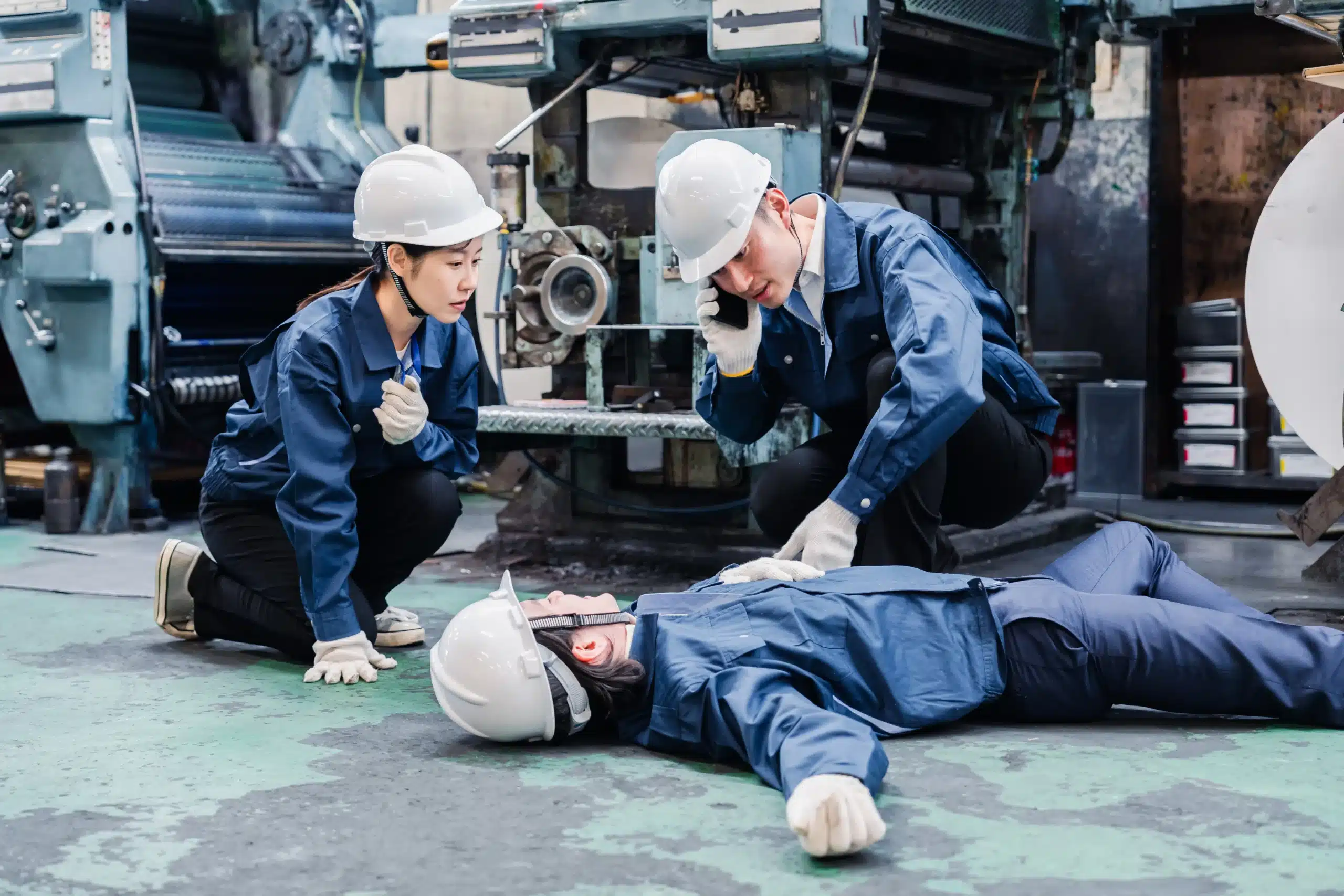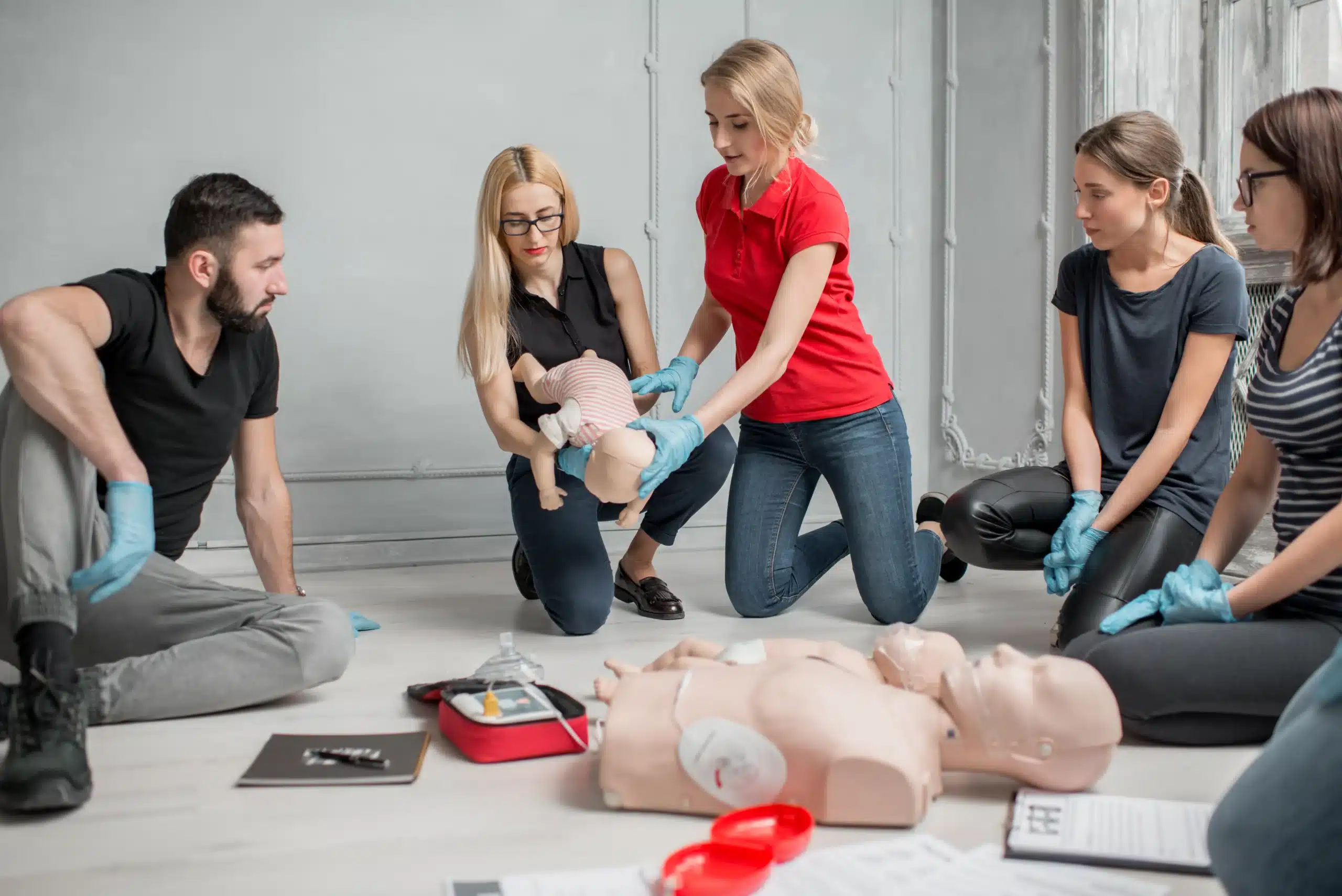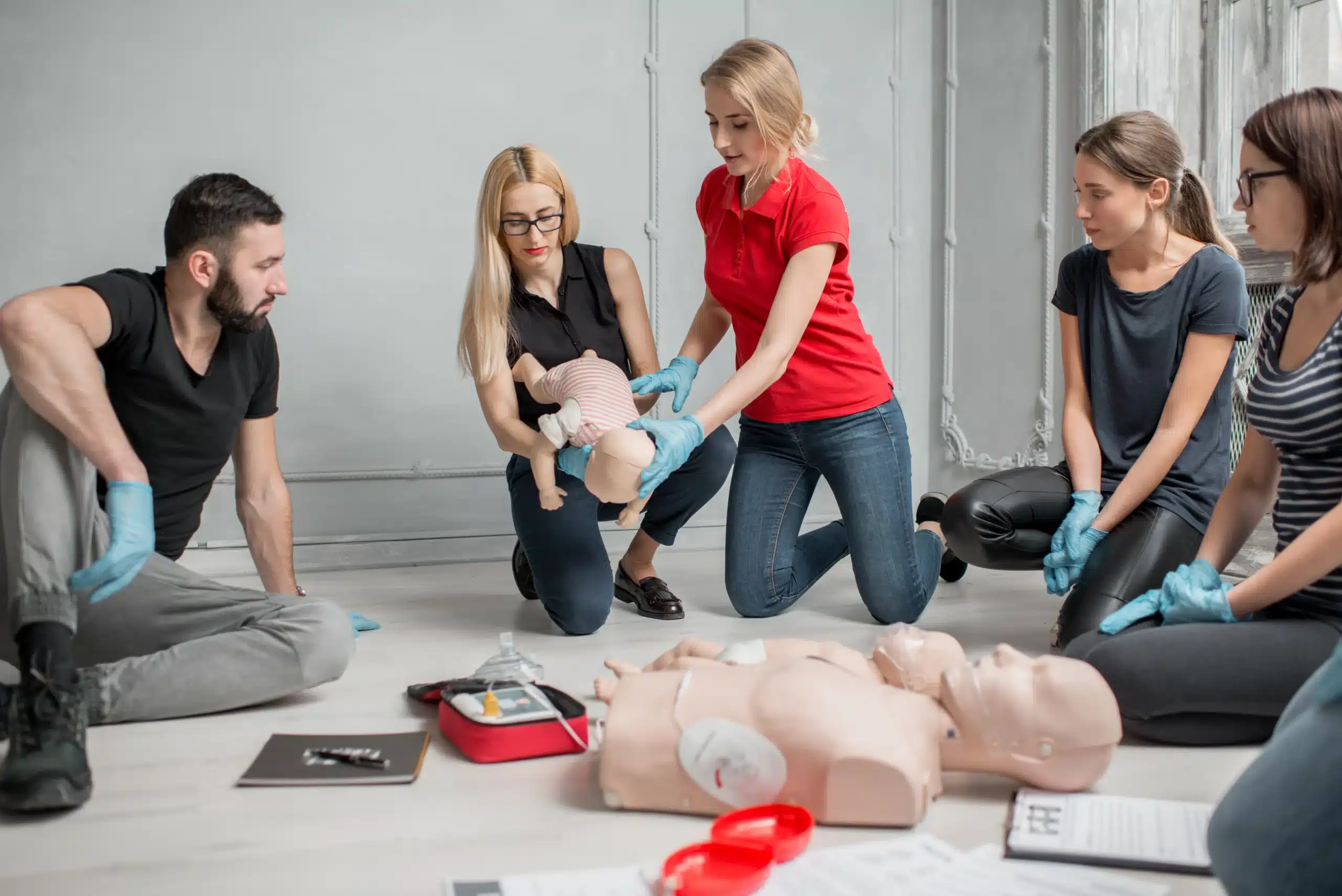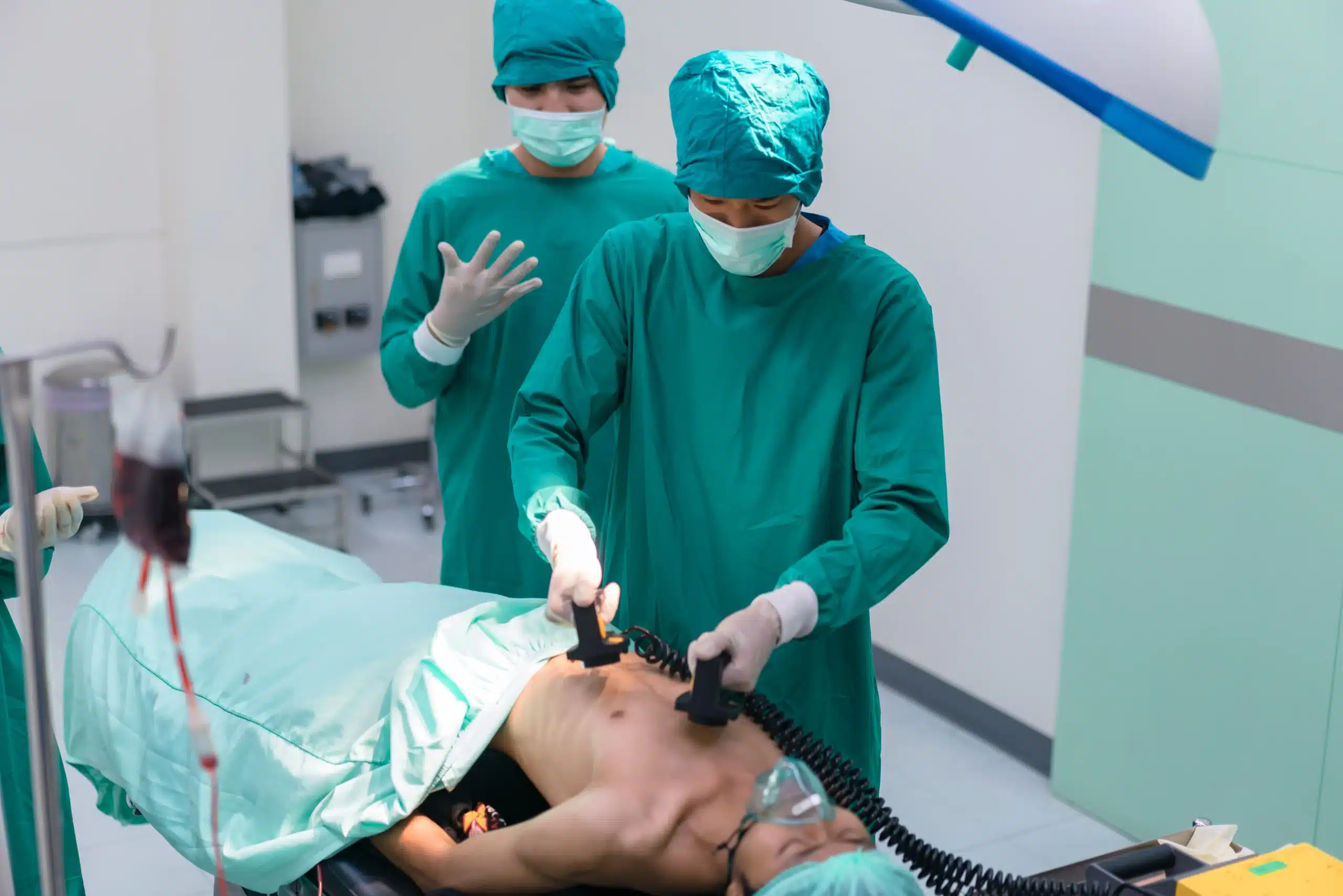In the heart of Silicon Valley, the importance of preparedness shines brightly, and that’s where BLS courses in San Jose come into play. Basic Life Support (BLS) isn’t just for medical professionals; it’s a life skill that empowers anyone to respond effectively during medical emergencies. This guide will navigate you through the essentials of BLS, debunking common myths, highlighting top course providers in San Jose, and equipping you with the knowledge to choose the right training program. We’ll delve into course formats, costs, and what to expect during your BLS training, ensuring you’re well-prepared to make a difference when it matters most.
Key Takeaways
- BLS certification empowers you to save lives: From healthcare professionals to everyday individuals, BLS training equips you with essential skills like CPR, AED use, and airway management to effectively respond to emergencies.
- Choosing the right course simplifies learning: Seek out AHA-accredited providers offering comprehensive curriculums, experienced instructors, and flexible formats like in-person, blended, or online learning. Explore programs like RQI for enhanced hands-on training.
- Preparation and practice build confidence: Familiarize yourself with the BLS Provider Manual, actively participate in class, and continue practicing after certification to maintain proficiency and effectively apply your skills in real-world situations.
What are BLS Courses & Why are They Important?
What is BLS?
BLS stands for Basic Life Support. It’s a crucial set of life-saving medical procedures used when someone experiences cardiac arrest, respiratory distress, or another life-threatening medical emergency. Think of it as the foundation of emergency care, providing the essential tools to help someone until professional medical help arrives. These techniques are designed to be relatively simple to learn and perform, empowering anyone to potentially save a life. A core component of BLS is CPR, but it also includes other vital skills like using an AED and relieving choking. You can find more information on our CPR and First Aid Certification page.
Why is BLS Important for Healthcare and Emergency Response?
BLS training is absolutely essential for anyone working in healthcare. It equips medical professionals with the skills to respond effectively in critical situations, directly impacting patient outcomes and survival rates. From doctors and nurses to paramedics and EMTs, BLS certification provides a standardized approach to emergency care, ensuring everyone on the medical team is prepared and confident. But the importance of BLS extends beyond the hospital setting. Having trained individuals in workplaces, schools, and even at home can make a significant difference in how emergencies are handled, potentially bridging the gap until professional help is available. Our BLS Certification courses empower individuals to respond effectively and confidently in a crisis.
Common BLS Certification Misconceptions
There are a few common misconceptions surrounding BLS certification that often deter people from pursuing this valuable training. One myth is that it’s only for doctors and nurses. Not true! BLS certification is beneficial for a wide range of professions, from teachers and coaches to lifeguards and childcare providers. Another misconception is that it’s too time-consuming. While comprehensive, BLS courses are designed to be efficient and manageable, fitting around busy schedules. Some also worry that if they have CPR training, they don’t need BLS certification. While CPR is a key component of BLS, the certification covers a broader range of skills. Finally, there’s the myth that online BLS certification isn’t as credible. Online BLS courses from reputable providers, including our American Heart Association BLS course, offer the same level of credibility as in-person training, providing flexibility for those with scheduling challenges. And remember, BLS certification requires renewal to ensure your skills stay sharp.
Top BLS Course Providers in San Jose
Finding the right BLS course provider is an important first step. Here are a few reputable options in the San Jose area:
Milpitas CPR Classes
Milpitas CPR Classes, offered through Safety Training Seminars, a woman-owned American Heart Association Training Center, provides various AHA courses including BLS, ACLS, PALS, CPR, and First Aid. They offer convenient scheduling, with classes available seven days a week in Milpitas and surrounding cities. Learn more about their BLS course and other offerings.
American Red Cross
The American Red Cross is a well-known provider of BLS certification courses. Their courses are designed by medical and scientific experts and meet national standards. The Red Cross offers various course formats and schedules, making it a flexible option for many.
CPR Training Center
The CPR Training Center in San Jose offers AHA-certified classes in BLS, ACLS, PALS, and First Aid. They also provide other courses like NRP and EMSA Health & Safety training, though these may be held at different locations. This training center is a good option if you’re also interested in other certifications.
Other Local Providers
You can find several other organizations offering BLS and ACLS courses in and around San Jose. A good starting point is this guide to BLS and ACLS courses in San Jose, which lists additional providers and resources. Doing some comparison shopping will help you find the best fit for your needs and budget.
BLS Course Formats & Costs
Finding the right BLS course often comes down to format and cost. Luckily, there are several options available to fit your learning style and budget. Let’s break down the most common formats and what you can expect to pay.
In-Person Classes
Traditional in-person BLS classes offer a structured learning environment with hands-on training and direct interaction with instructors. These courses are a great fit if you thrive in a classroom setting and value face-to-face instruction. Providers like the American Red Cross offer in-person BLS certification and renewal courses, some as short as 4.5 hours.
Blended Learning Options
If you prefer a more flexible approach, blended learning combines online coursework with an in-person skills session. This format allows you to learn the theoretical material at your own pace online, then demonstrate your skills in a practical setting. The Red Cross also offers this blended learning format, giving you the best of both worlds.
Online Certification
For those short on time, fully online BLS certification programs like the RQI program are a convenient option. These programs typically involve online learning modules followed by an in-person skills evaluation. This streamlined approach often allows for same-day certification. Check with your local providers to see what online options they offer.
Average Prices & Group Discounts
BLS certification courses in Milpitas generally cost around $70 for a 3.5-hour class. Keep an eye out for group discounts—many providers, including Milpitas CPR Classes, offer reduced rates for groups of two or more. This can be a great way to save money if you’re signing up with colleagues or friends. You can find more information on BLS CPR provider classes and pricing on various websites.
What to Expect in Your BLS Course
So, you’ve decided to take a BLS course—great choice! Knowing what to expect can help you feel prepared and ready to learn these vital life-saving skills. This section covers the typical duration, key topics, hands-on components, and the certification process.
Course Duration & Time Commitment
BLS certification courses are designed to be efficient and manageable, typically lasting around 3.5 hours. This timeframe allows instructors to cover the comprehensive curriculum without overwhelming participants. The concise format makes it easier to fit the training into your busy schedule.
Key Topics & Skills
BLS courses cover a range of essential skills, focusing on effective responses to life-threatening emergencies. You’ll learn how to recognize the signs of someone experiencing cardiac arrest, respiratory distress, or an obstructed airway. The curriculum emphasizes high-quality CPR for adults, children, and infants, including chest compressions and rescue breaths. You’ll also learn how to use an automated external defibrillator (AED) and practice important teamwork and communication skills for effective emergency response. The course will cover the latest AHA guidelines for BLS.
Hands-On Practice & Skills Assessment
BLS training is hands-on. You’ll practice the skills you learn in a safe and supportive environment. Expect to participate in simulated scenarios where you’ll perform CPR on manikins, practice using an AED, and work with other students to manage emergency situations. This practical experience builds your confidence and muscle memory, preparing you to respond effectively in a real emergency. Instructors provide feedback and guidance throughout the course, ensuring you master the necessary techniques. This hands-on training is crucial for developing the skills and confidence needed to perform BLS effectively.
Certification Process & Validity
You’ll receive your American Heart Association (AHA) BLS certification card on the same day you successfully complete the course. This certification is valid for two years. Remember that maintaining your BLS skills is an ongoing commitment. You’ll need to renew your certification every two years to stay up-to-date with the latest guidelines and best practices. This ensures you can continue to provide high-quality care and respond confidently in emergencies.
Benefits of BLS Certification
Getting your BLS certification is more than just checking a box; it’s a powerful tool that can open doors and empower you in life-saving ways. Whether you’re pursuing a healthcare career or simply want to be prepared for emergencies,
Improved Healthcare Job Prospects
BLS certification is often a non-negotiable requirement for many healthcare roles. Employers need assurance that their staff can handle basic life support situations. Having this certification demonstrates your commitment to patient safety and makes you a more competitive candidate. It can give you an edge and pave the way for career advancement. For those in the Milpitas, San Jose, and Santa Clara areas, local courses make obtaining this crucial certification convenient.
Life-Saving Skills for Various Professions
BLS skills aren’t just for healthcare providers. Think teachers, coaches, childcare providers, security guards—the list goes on. BLS training equips people in various professions to respond effectively during emergencies, potentially saving lives in their workplaces or communities. It’s a valuable asset that can make a real difference in unexpected situations. These skills empower individuals to act quickly and confidently when faced with a medical crisis.
Confidence in Emergencies
Knowing you can handle a medical emergency brings a sense of calm and confidence. BLS certification provides the training and practice you need to respond quickly and efficiently under pressure. This confidence can be invaluable, not only in professional settings but also in your personal life. Knowing you have the skills to provide immediate assistance can make all the difference in a critical situation. This peace of mind extends beyond the workplace and empowers you to be prepared for anything.
Real-Life BLS Scenarios
From cardiac arrest to choking incidents, BLS techniques address a range of life-threatening emergencies. Understanding the principles of the “Chain of Survival” and how to perform CPR, use an AED, and provide rescue breaths can significantly improve outcomes. BLS training prepares you to act decisively and effectively when every second counts. These skills are applicable in various real-world situations, empowering you to make a difference in someone’s life. For residents of Milpitas, San Jose, and Santa Clara, convenient access to BLS courses makes gaining these life-saving skills easier than ever.
Choosing the Right BLS Course in San Jose
Finding the right BLS course can feel overwhelming with so many options. But by focusing on a few key factors, you can easily narrow down your choices and select a program that best suits your needs.
Accreditation and Recognition
First, verify the training center’s accreditation by a reputable organization like the American Heart Association (AHA). Safety Training Seminars, for example, is a woman-owned AHA Training Center offering BLS certification in nearby Milpitas. This accreditation is crucial because it ensures the course meets industry standards and provides a recognized certification, which is often a requirement for many healthcare jobs.
Instructor Qualifications
The quality of instruction significantly impacts how well you learn and retain information. Look for courses taught by experienced, certified instructors with a strong background in healthcare and emergency response. Instructors should be knowledgeable and adept at explaining complex information clearly. If this information isn’t readily available, don’t hesitate to ask about the instructors’ experience and credentials.
Course Content & Materials
A comprehensive BLS course should cover essential topics such as CPR, airway management, and AED use. The course materials should be current and aligned with the latest AHA guidelines. Some courses offer supplemental resources like online practice tests or refresher materials, which can be valuable tools for reinforcing your learning. Review the course curriculum and materials beforehand to ensure they align with your learning style and objectives. Milpitas CPR Classes offers various AHA courses, including BLS, ACLS, and CPR/First Aid, providing well-rounded training options.
Class Schedule & Flexibility
Finally, consider the course schedule and format. Do you prefer a weekday evening class, a weekend intensive, or a blended learning format combining online modules with in-person skills practice? Many training centers offer a variety of schedules and formats to accommodate busy schedules. Finding a course that fits your availability will make attending and completing the training much more manageable. Milpitas CPR Classes offers courses seven days a week, providing flexibility for those with demanding schedules.
Registering & Preparing for Your BLS Course
So, you’re ready to sign up for your BLS course? Great! This section covers everything you need to know about registering and preparing, so you’ll feel confident and ready to learn.
Register Online
Finding a BLS course that fits your schedule is easier than ever. Most training centers, like Milpitas CPR Classes, post their schedules and registration information online. Look for a link to their course calendar and choose a date and time that works for you. Many centers offer weekday and weekend options to accommodate busy schedules.
Required Information & Prerequisites
Before you register, double-check for any prerequisites. You’ll likely need a BLS Provider Manual, which you can usually purchase as an eBook or paperback. It’s a key resource for the course, so grab it beforehand to familiarize yourself with the material. Some training centers may include the manual in the course fee, so be sure to check.
Study Materials & Resources
Speaking of materials, using the right resources can make a big difference in your BLS training. The RQI program (Resuscitation Quality Improvement) from the American Heart Association is a fantastic option, especially for healthcare professionals. It focuses on hands-on practice and provides immediate feedback, which can really enhance your learning. Check with your chosen training center to see if they incorporate RQI into their courses. You can also find additional study resources, such as practice tests and videos, online.
Tips for BLS Training Success
Here are a few tips to help you succeed in your BLS training:
- Review the BLS Provider Manual: Familiarize yourself with the content before class. This will give you a head start and allow you to focus on the practical skills during training.
- Come Prepared: Dress comfortably and bring a notebook and pen to jot down important notes. Having a water bottle handy is also a good idea.
- Ask Questions: Don’t hesitate to ask your instructor any questions you have. Clarifying concepts early on will help you master the skills. Your instructor is there to support you!
- Practice Regularly: BLS skills require regular practice to maintain proficiency. Consider refreshing your skills periodically, even after you’re certified. This will help you stay sharp and confident in your abilities.
Remember, the skills you learn in BLS training are invaluable. They can help you confidently respond to emergencies, whether you’re a healthcare professional or simply want to be prepared for anything.
Related Articles
- BLS Certification in San Jose: Your Complete Guide – Milpitas CPR Classes
- BLS Certification Milpitas: Your Comprehensive Guide – Milpitas CPR Classes
- BLS Certification in Santa Clara: Your Full Guide – Milpitas CPR Classes
- BLS for Healthcare Providers in Santa Clara: A Guide – Milpitas CPR Classes
- BLS ACLS Courses in San Jose: A Complete Guide – Milpitas CPR Classes
Frequently Asked Questions
Is BLS certification only for healthcare professionals?
Not at all! While essential for healthcare providers, BLS certification benefits anyone who wants to learn life-saving skills. Teachers, coaches, parents, and other community members can also gain confidence and preparedness through BLS training. It empowers individuals to respond effectively in emergencies, regardless of their profession.
What’s the difference between BLS and CPR certification?
CPR is a core component of BLS, but BLS covers a broader range of skills. Think of BLS as a more comprehensive approach to emergency care. It includes CPR techniques but also covers using an AED, relieving choking, and understanding the principles of high-quality CPR.
How long does BLS certification last, and how do I renew it?
BLS certification is typically valid for two years. Renewal involves retaking the course to refresh your skills and stay up-to-date with the latest guidelines. This ensures you maintain proficiency and can continue to provide effective care in emergencies.
Are online BLS certification courses as credible as in-person classes?
Yes, many reputable organizations offer fully online or blended learning BLS courses that hold the same credibility as traditional in-person classes. These courses often combine online learning modules with an in-person skills evaluation component, providing flexibility while maintaining high standards.
How can I find a reliable BLS course provider in my area?
Start by checking with nationally recognized organizations like the American Heart Association or the American Red Cross. They often have local training centers or can provide a list of certified instructors in your area. You can also search online for local providers and compare their course offerings, schedules, and costs. Look for providers with accredited instructors and up-to-date curriculum.
